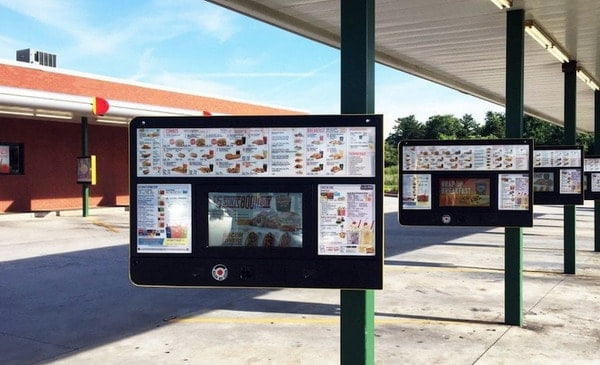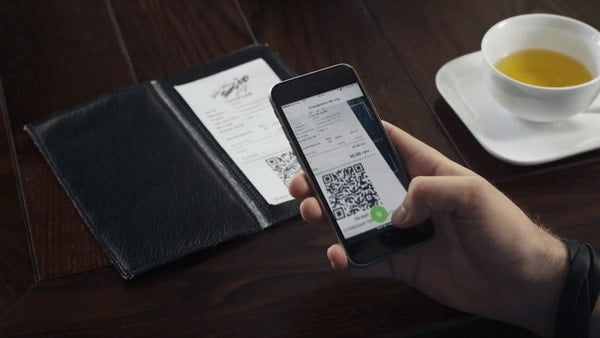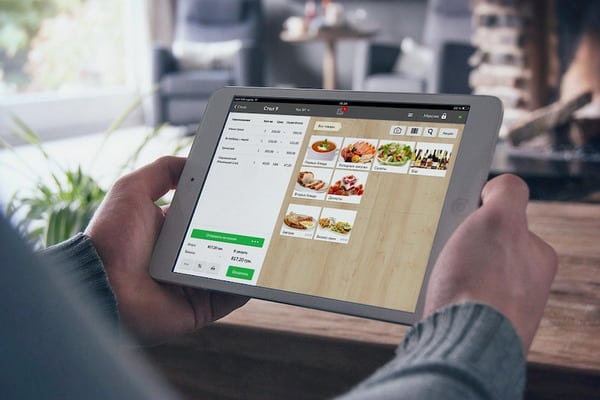Restaurant Trends 2020
Last Updated on May 14, 2024 by zeidqi
The time when the trip to the restaurant was in no way connected with technology has passed. What used to seem like innovation, such as an online pizza delivery service or free Wi-Fi at the establishment, has now become the default service. We will talk about how technology has changed the restaurant market, which services are already available in our countries, and which have not taken root.
Restaurant Tech Trends 2020
What are the current global tech trends in the restaurant industry?
In order not to go far, the latest and most interesting restaurant and bar trends 2020 can be found at thematic exhibitions. One of them is the NRA Show in Chicago, the most innovative and large-scale in the world. This is where all companies first show their technological innovations. What happens in the USA is almost always repeated in our country, only with a delay of several years.
Here is some data on the results of US market research, voiced at one of the NRA Show expert sessions:
- 71% of visitors to establishments are important the opportunity to order food
- 52% of guests expect free Wi-Fi in a restaurant
- 47% of people believe that you can pre-order by phone
- 78% of millennials are looking for a restaurant menu on the Internet
- 32% of millennials already pay via Apple Pay and Google Pay
All this suggests that now it’s not enough just to meet the standard criteria of the restaurant: to guarantee only cleanliness, quality of the product and service.
People choose technology and are looking for a place that can satisfy this request. This is becoming more common in our market.
Automation and Digitalization
Each year, the number of able-bodied people in Russia decreases by 250-300 thousand. In Ukraine, the number is much smaller, but there is a problem of labor migration to the nearest European countries. The market for potential HoReCa employees is getting smaller, and no one wants to increase spending on a salary fund. The search and retention of staff has become one of the main problems in the catering market.
Because of this, the automation trend has begun to develop in the world – more and more restaurateurs are thinking about integrating technologies to optimize service speed and save on labor costs. According to the National Restaurant Association of the United States, about 41% of faculty establishments in the United States plan to use tablets, desktop ordering systems or self-service kiosks in 2020.
But if in the West automation is primarily an increase in the speed and quality of customer service, then our restaurateurs have not yet set these goals. The owners of institutions introduce technologies primarily to work according to the law, for example, send fiscal checks to the tax, and fight theft. A detailed inventory of the warehouse, inventory, detailed technological maps make it possible to better control the work processes in the institution.
In many Western countries there is no fiscalization and special requirements for managing the institution, and the topic of theft is less relevant. Establishments do not keep records as carefully as our restaurateurs: recipes may not be driven in, inventories are done every few months, etc. Less attention is paid to accounting — more to service speed and loyalty.
Delivery and food takeaway
The culture of food delivery and online ordering is growing at an incredibly fast pace. Applications Delivery.com, Uber Eats, Caviar – one of the most popular in the food industry in the world. In addition to delivery from ordinary establishments, the number of orders from “virtual” restaurants is growing, which do not accept offline guests and are prepared exclusively for delivery. One of the new ideas on the market is “hubs” for virtual establishments: kitchens of different restaurants under one roof, between which autonomous cars ply, picking up orders and delivering them to customers. This reduces the cost of institutions and makes delivery more accessible to visitors.
We have a separate article on the organization of delivery for cafes and restaurants , where you can learn in more detail how this can be implemented in Ukraine or Russia.
Trends in the development of delivery from institutions
- Growth in the number of consumers and online orders
According to the latest ResearchAndMarkets study, the volume of the global online food delivery market in 2018 amounted to $ 84.6 billion. According to analysts, active growth will continue in the future – by an average of 9.8% – until 2026. In Russia and Ukraine, the delivery segment also shows strong growth: over the past 5 years, the market has grown by 35%.
- A variety of channels and delivery methods
Millennials and Generation Z are priority audiences for delivery services. They, in comparison with other generations, spend a large share of their budget on ordering ready-made meals. They also make the highest demands: instant delivery, gamification, an individual approach and tracking of the delivery process.
To meet the needs of their customers, delivery services introduce new technologies and simplify the order mechanism as much as possible. You can order it on social networks, using virtual assistants and from the car’s navigation system.
For example, in the USA, pizza from Pizza Hut can be ordered and paid directly from the machine’s digital menu, and from Domino’s Pizza, simply by retweeting pizza emojis. In the same Pizza Hut released a digital menu that determines the focus of the client’s eyes and offers the best pizza ingredients from 4896 possible combinations in just 2.5 seconds.
In Russia, with the help of Alice’s voice assistant, you can order food from the Papa Jones pizzeria and culinary from the ABC of Taste. In Moscow, the Skipz application has also been launched – a service that allows drivers to order and receive dishes from restaurants without leaving their car.
- Restaurant software integration
Delivery services install their own tablets in establishments – it is on them that restaurants receive notification of orders. However, the waiters are forced to manually “interrupt” these orders into the restaurant accounting system. Some establishments in the USA can have up to 5-6 tablets of different delivery services. This double job greatly delays the maintenance process.
In 2018, the leading delivery platforms finally began to solve this “pain” of restaurateurs – GrubHub announced integration with five popular accounting systems of establishments, and UberEats decided to purchase orderTalk online booking system to use their experience of integration with cash desks. Software integration will automatically send orders for delivery to the institution’s accounting system and receive all operational data from all sales channels in one place.
Restaurant Robotization
For some reason, many believe that robots are still a distant future. In fact this is not true. Now robots are divided into:
- front of the house – work with guests;
- back of the house – close tasks in the kitchen.
So far, there are more examples of the second: robotic hands that fry burgers ( Miso Robotics ), or automatic machines that prepare to go salads ( Spyce ). Such technologies make it possible to achieve the same product quality in networked institutions. Robots for work in the hall so far are used less often and look very strange. For example, Bear Robotics has a robot that replaces the bass in restaurants.
Robotization is considered as one of the most effective methods for solving personnel problems in the future. This is not about replacing AI people, but rather about optimizing the most understandable areas of employee work.
Robots for the hall are less commonly used so far. One of the latest innovations presented at the last NRA Show in Chicago is the Penny 2 ( Bear Robotics ). He knows how to move along narrow corridors, navigate the crowd, deliver food and pick up dirty dishes. The new model has a tablet with which you can take orders and communicate with the guest.
Ono Food Company plans to launch in Los Angeles the world’s first fully automated restaurant on wheels with robots and technologies for preparing food and taking orders. In Russia and Ukraine, the technology situation is not developing as fast as in the United States: self-service kiosks and robots are far from a mass phenomenon.
Nevertheless, now many institutions work with cloud-based accounting systems, waiters use a smartphone or tablet instead of a notebook with a pencil, and the kitchens have screens with orders.
Cloud services
The tendency to store institution data not on its own server in the institution, but in the cloud is gaining momentum. Restaurateurs want to have full access to operational data and analytics from anywhere in the world, and not depend on one workplace. Not only tablet systems work in the cloud, traditional stationary automation systems began to offer data on more secure remote servers.
Self Service Kiosks
This is a trend for fast food and fast casual formats. In fact, the cashier is becoming an extra link in establishments of this format, and restaurateurs are trying to replace it and minimize costs. 13% of visitors to the United States have already booked through kiosks. A third of respondents said they would use kiosks if they had such an opportunity.
QR code on customer’s check
More and more restaurants are using this technology so that the guest can pay for the order using a smartphone. It is enough to ask the waiter for an account and scan the QR code through the mobile application, after which the amount will be automatically debited from the card. The whole process takes just a few clicks – no need to ask to bring the terminal and wait. A QR code scanner is in every smartphone with a camera.
The QR code itself may contain various information: menu, delivery conditions, restaurant history or personal loyalty card data. Using the code, you can also create a note on the calendar with the action or event that will be in the institution, or you can simply redirect the visitor to the feedback page.
There is another practical application of codes. For example, the latest Poster integration with an application that helps guests call a waiter or request an invoice after scanning a QR code. Put a sign on each table or stick stickers on the menu. Visitors can scan the code using the camera and call the waiter or ask for an account in the browser window that opens.
Face recognition
Self-service kiosks can also be smart: identify the guest by the face, offer him to repeat the previous order, and then automatically debit the money from the card. For example, in an experimental mode, Face ID works on the Cali Burger network .
Online restaurants
The restaurant should be available on the Internet. As an option, this can be a website with a menu optimized for mobile phones, and pages of the institution on social networks with an employee who quickly answers questions.
Aggregators Suppliers
“From the farmer to the table.” Guests who are increasingly thinking about a healthy lifestyle want to get quality local products and know where and how they were grown, how they were transported and how all this affects the environment. Amid such changes in consumer behavior, marketplaces appear connecting farmers and restaurants with a geographic location. These are, for example, services such as Podfoods .
Restaurant tech trends that have not taken root
One way or another, yet innovations in the 2019 restaurant business have occurred. But, despite the rapid development of technologies and their introduction into the field of public catering, not all of them found a response among the guests of the institutions.
One of the most controversial technologies of recent years. The same applies to applications inside establishments for calling a waiter to order dishes. Practice shows that the usual option for a guest to communicate with a waiter in the near future, most likely will not change.
People in cafes serviced by tables are important communication and feedback from a living person. Perhaps, with personalization and understanding of the context, timely recommendations of the tablet on the tables, a second chance awaits.
Chatbots for pre-order or table reservations
Another technology that has been extolled to the skies, but which so far has shown itself very poorly in practice, especially in the CIS countries. Yes, it looks interesting and technological, but at the same time it is still rarely used, despite the fact that the messengers themselves have already taken up their positions in everyday life. We have very few establishments in which it would be constantly “clogged”, which is really hard to get into. Therefore, such popular services in the USA as table reservations and queue management in an institution, when guests receive a notification by phone, as soon as their turn has arrived, we practically do not work.
There is still no normal opportunity to pay with a card tip. This is largely due to the imperfection of legislation in this area.
Food service technologies in Ukraine and Russia
First of all, you need to understand that the automation of institutions in our countries and in most countries of the European Union and the USA serves for different purposes. In our country, the use of any technological systems is considered primarily as an obligation: for example, compliance with the cash register and sending fiscal checks to the tax to ensure compliance with the law. For Russia, EGAIS and the requirements of 54-FZ are added here .
Fiscalization
In many foreign countries there is no fiscalization and strict requirements for managing the institution, so the technology market there goes a different way. Due to the large workloads at establishments and almost complete non-cash payment, systems that optimize the speed of guest service are best developed – queue management services ( wait list ), delivery, table reservations.
Where the theft problem is practically irrelevant, institutions do not keep records as scrupulously as our restaurateurs. Nobody drives recipes; inventory is not often carried out. Less focus on accounting – more on service speed and loyalty.
Accounting systems
According to the National Restaurant Association of the United States, today in America 81% of restaurateurs use some kind of POS system or cash register. In Ukraine and Russia, this figure is much lower, but there are fewer cases when an institution is opened without any accounting system. Institutions use mobile POS-systems on tablets or stationary “boxed” options. Such systems can optimize processes, minimize theft and reduce costs thanks to better control over the movement of goods and cash.
Food delivery from restaurants and cafes
We are developing this trend faster than others. For example, in 2018, the Spanish startup Glovo entered the Ukrainian market, and in early 2019, Uber Eats. Everything is even better in Russia: Delivery Club and Yandex.Food have been working there for a long time, well-known blogger Varlamov and Tinkoff Bank have also launched their services.
Personalization and application loyalty programs
Marketing activities and restaurant loyalty programs are increasingly moving into applications. At the end of 2018, McDonald’s and Starbucks first launched promotions only for applications, and Burger King also tied them to geolocation: on the network they distributed free sandwiches to anyone who downloaded their application, standing within 200 meters of their main competitor, McDonald’s. The promotion made Burger King the most downloaded free app on the App Store in the early days of the promotion.






